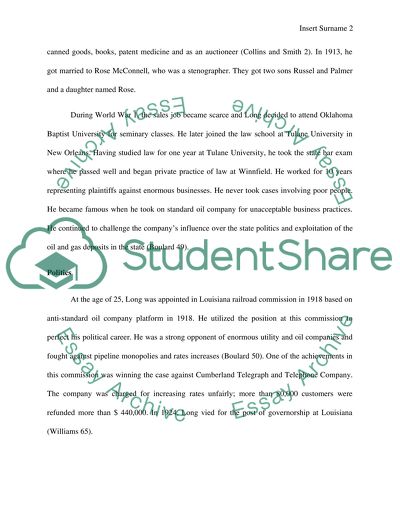Cite this document
(“Biography of Huey Long Essay Example | Topics and Well Written Essays - 1750 words”, n.d.)
Biography of Huey Long Essay Example | Topics and Well Written Essays - 1750 words. Retrieved from https://studentshare.org/history/1592602-biography-of-huey-long
Biography of Huey Long Essay Example | Topics and Well Written Essays - 1750 words. Retrieved from https://studentshare.org/history/1592602-biography-of-huey-long
(Biography of Huey Long Essay Example | Topics and Well Written Essays - 1750 Words)
Biography of Huey Long Essay Example | Topics and Well Written Essays - 1750 Words. https://studentshare.org/history/1592602-biography-of-huey-long.
Biography of Huey Long Essay Example | Topics and Well Written Essays - 1750 Words. https://studentshare.org/history/1592602-biography-of-huey-long.
“Biography of Huey Long Essay Example | Topics and Well Written Essays - 1750 Words”, n.d. https://studentshare.org/history/1592602-biography-of-huey-long.


